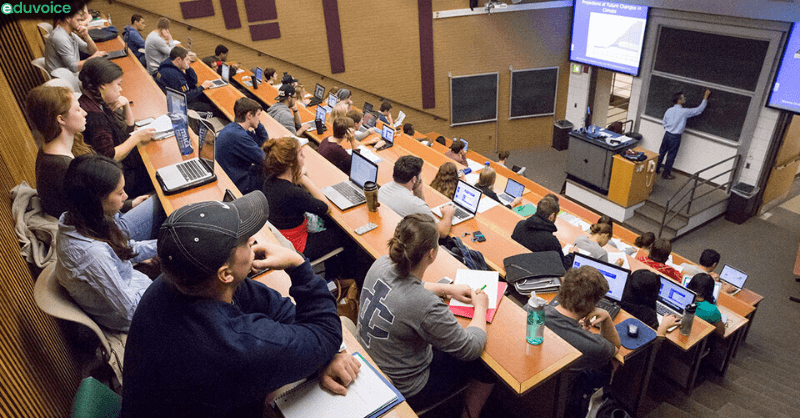Finding creative ways to use technology in the classroom can both make student’s life easier and boost student excitement levels and engagement with lessons. From helping with communication among teachers and students (as well as peer-to-peer) to organizing syllabus calendars to enhancing presentations and lessons with audio and visuals, there is no limit to the number of ways to use technology in the classroom to create an enriched learning environment.
1. Gamified Learning

Not only are typing games incredible, and incredibly engaging programs for teaching students typing skills. They make using a computer fun for the user and set the foundation for all other computer knowledge students gain. Learning should be fun and using technology for gamified learning in the classroom can be advantageous to achieving that goal. Gamified learning can also be as simple as creating a virtual scavenger hunt. In which there is a list of tasks for students to do and find the correct answers for and adding students to pairs or groups to encourage collaboration and teamwork.
2. Digital Field Trips
A popular, useful, and cost-effective tool for teachers searching for ways to use technology in the classroom is digital field trips. Google Streetview and other similar apps allow you to virtually explore parks, forests and even national and international landmarks from the comfort of your classroom. Virtually experience the view from the India Gate to get students excited to learn about a location or subject and extend learning beyond the page.
3. Integrate Social Media

Students already spend so much time on social media. Integrating its use into the classroom is among the most innovative ways to use technology in the classroom. Create a Facebook group where teachers post discussion topics. Develop unique classroom Twitter hashtags students can use to discuss lessons or ask questions.
4. Gather Student Feedback
The true test of any classroom structure is how well it helps the students learn. Getting feedback from students is an important step to assessing this, determining what is and isn’t working. Then addressing problems and confusion as they arise. Use online surveys and polls to perform weekly or monthly check-ins with students to get their feedback on lessons and address lingering questions or doubts.
5. Creating Digital Content
Creating digital content related to the things that students are learning is a great way for them to display their individual creative talents as well as showcase learning. The process of creating content is most effective when students are able to express themselves in ways that bring out and accommodate their personal strengths and learning styles. Provide options for students to express themselves through blogs, videos, podcasts, eBooks, flyers and other digital art. Respect each student’s individuality and need for creative expression helps them grow as learners.
6. Using a Classroom Calendar
Develop a shared online calendar for a classroom through Google Calendar for posting important updates and events. Post assignment due dates and classroom events in one easily-accessible location for both teachers and students. Share the calendar with parents to keep them connected and engaged with their child’s learning.
Read Related Article – How is Technology changing Education?
7. Review and Critique Webpages
While we know how to find almost anything on the internet, we also know that much of what we may find is not reliable information from reliable sources. Empower students with the digital literacy to analyze and discern reliable web pages and sources from unreliable ones by reviewing them together. Developing and communicating standards for what makes a good source on the internet.
8. Video/Multimedia Lessons and Presentations

Create presentations for students by incorporating visual effects, photos, videos, and music into them. Developing slideshows and digital presentations, playing music or a video for background and context while presenting. Inviting virtual guest speakers to engage with the class via programs designed for conference calls (such as Skype, Google Hangouts, and Facetime) are fun and creative ways to boost engagement with lessons while teaching the benefits of technology and multimedia use in the class.
9. Online Activities For Students Who Finish Work Early
Setting up learning stations to encourage and support students working at their own pace. If a student finishes an assignment early he/she can extend and enhance their learning by visiting a learning station and watching videos, playing learning-based games, or exploring other online activities related to their learning.
Integrating technology into classrooms allows for more (and more effective) communication between students and teachers. Also the interaction between students and peers and parents and teachers, all of which are vital to students’ academic success. Using technology in the classrooms also creates space for students to have a voice in their learning. Students are empowered to take responsibility for their learning through giving feedback on lessons, participating in projects and learning activities that respect their individuality and having opportunities and support to learn and understand how to use technology creatively, effectively and safely.

